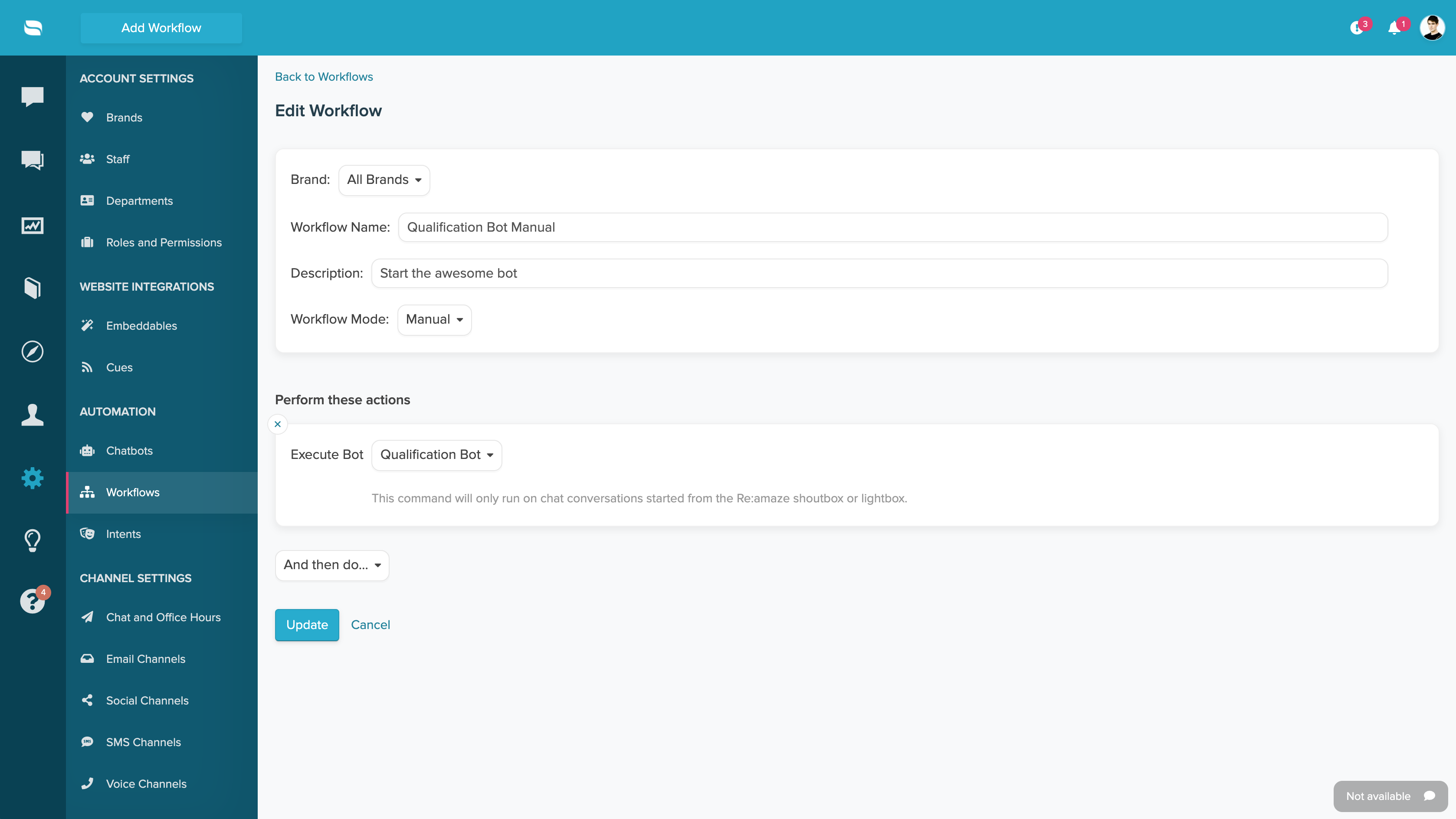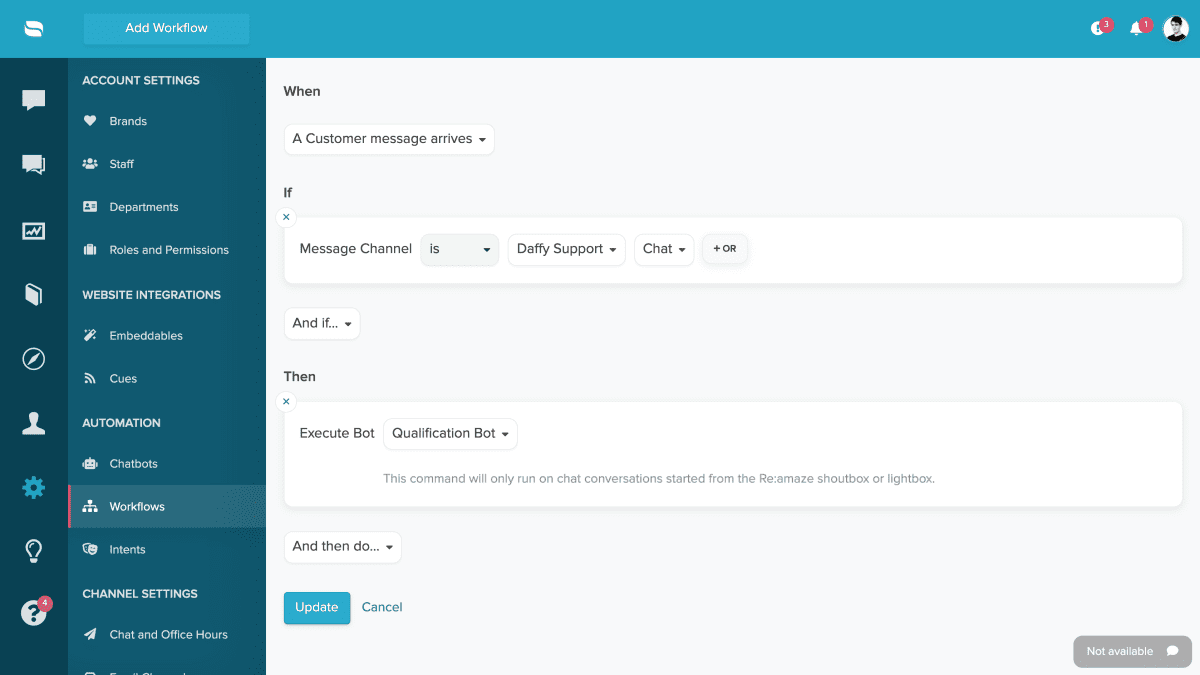Last Updated on June 3, 2020 by David
With Custom Chatbots still in beta we believe this is the perfect time to introduce a new type of custom chatbot: Workflow Bots.
With two types of custom bots now in circulation we’re going to split up the naming convention. Re:amaze Custom Chatbots now consist of:
- Custom Cue Bots
- Custom Workflow Bots
What is a Workflow Bot?
Custom Workflow Bots, like Cue Bots and other pre-built chatbots, work with Re:amaze Chat to help customers navigate/find products/features/settings and get answers to questions. While pre-built bots get triggered on the first customer message when there’s a match to an order related question or an FAQ article and Cue Bots get triggered from a Cue, Workflow Bots get triggered, you guessed it, workflows.
Why is it beneficial to be able to trigger a bot from a workflow? Flexibility and control. Being able to trigger a Custom Chatbot from a workflow means you no longer need a Cue. Your Custom Chatbot can now be triggered when:
- customers submit a chat message
- customers submit a chat message while matching other conditions and rules
- customers submit a chat message and that message matches a specific intent
- while customers are chatting with you and you decide to hand them over to a workflow bot in order to automatically collect data
Benefits of a Workflow Bot
The major advantage of a Workflow Bot is that it can be triggered after a message has been submitted. This means, you can have a variety of Bots built out to handle specific situations/scenarios and map each Bot to a specific type of inquiry.
For example, your store sells hiking gear such as tents, backpacks, climbing equipment, etc. You can design a Bot that will guide customers through each of these product categories. When customers decide to chat with you about a specific category such as “Backpacks”, you can execute the Bot that is designed to ask questions and provide recommendations for the Backpack category. The process that decides which Bot to execute is determined by the Workflow.
The Bot
Before creating a Workflow that can trigger a Bot, you need to build the Bot. The process for building a Bot is very similar to Cue Bots. Head on over to Re:amaze Settings > Automation > Chatbots > Manage Bots. Select the option to create a new Workflow Bot.

Go through the set up process and design your Bot flow. Here’s an example one we made:
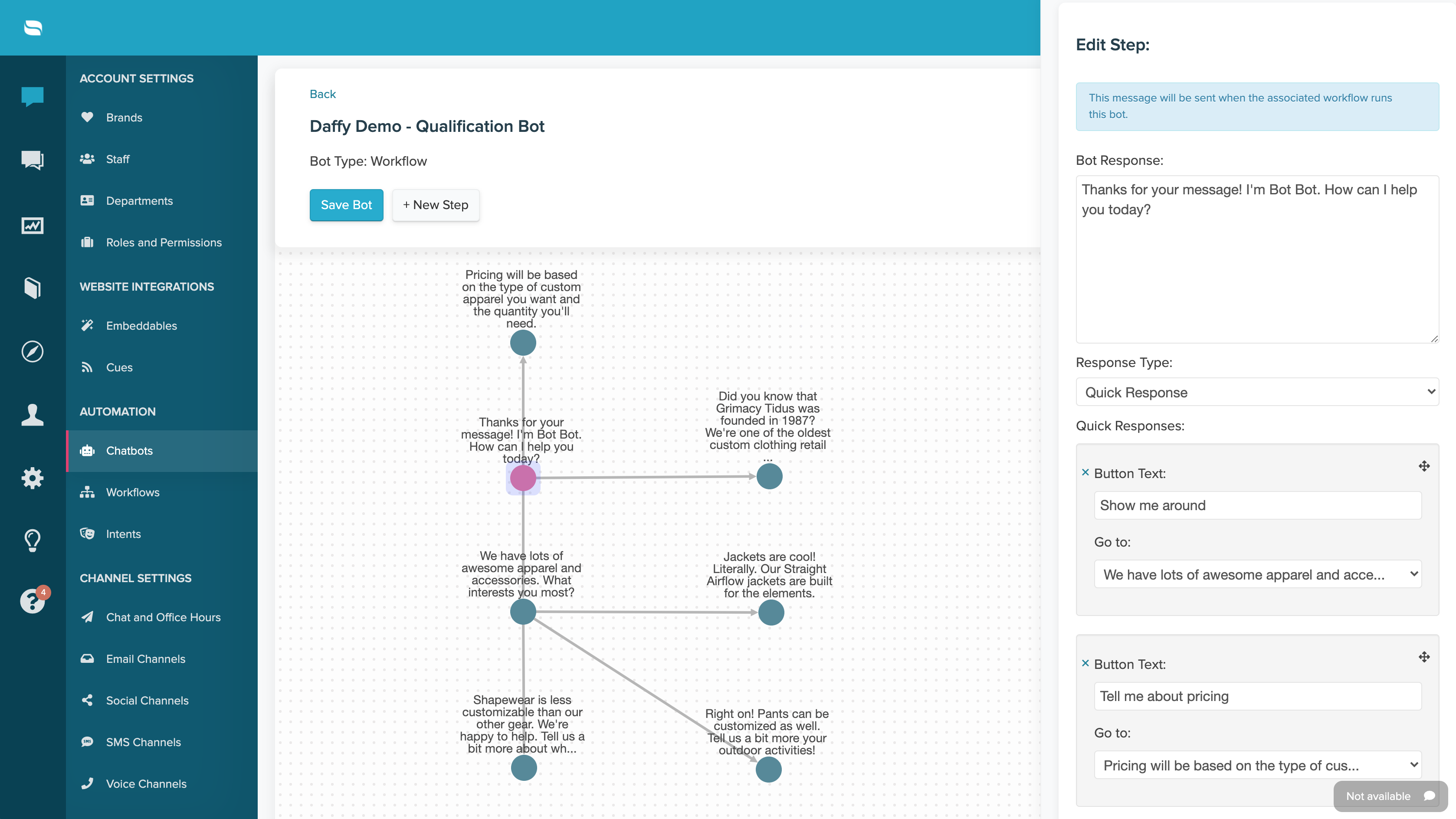
Now let’s take a look at some example setups for the most common types of Workflow Bots.
Standard Workflow Bot
The most typical Workflow Bot you can create is one that is based on a new incoming conversation from your Chat channel with no additional conditions. This type of Workflow Bot will start whenever a new conversation is received via chat.
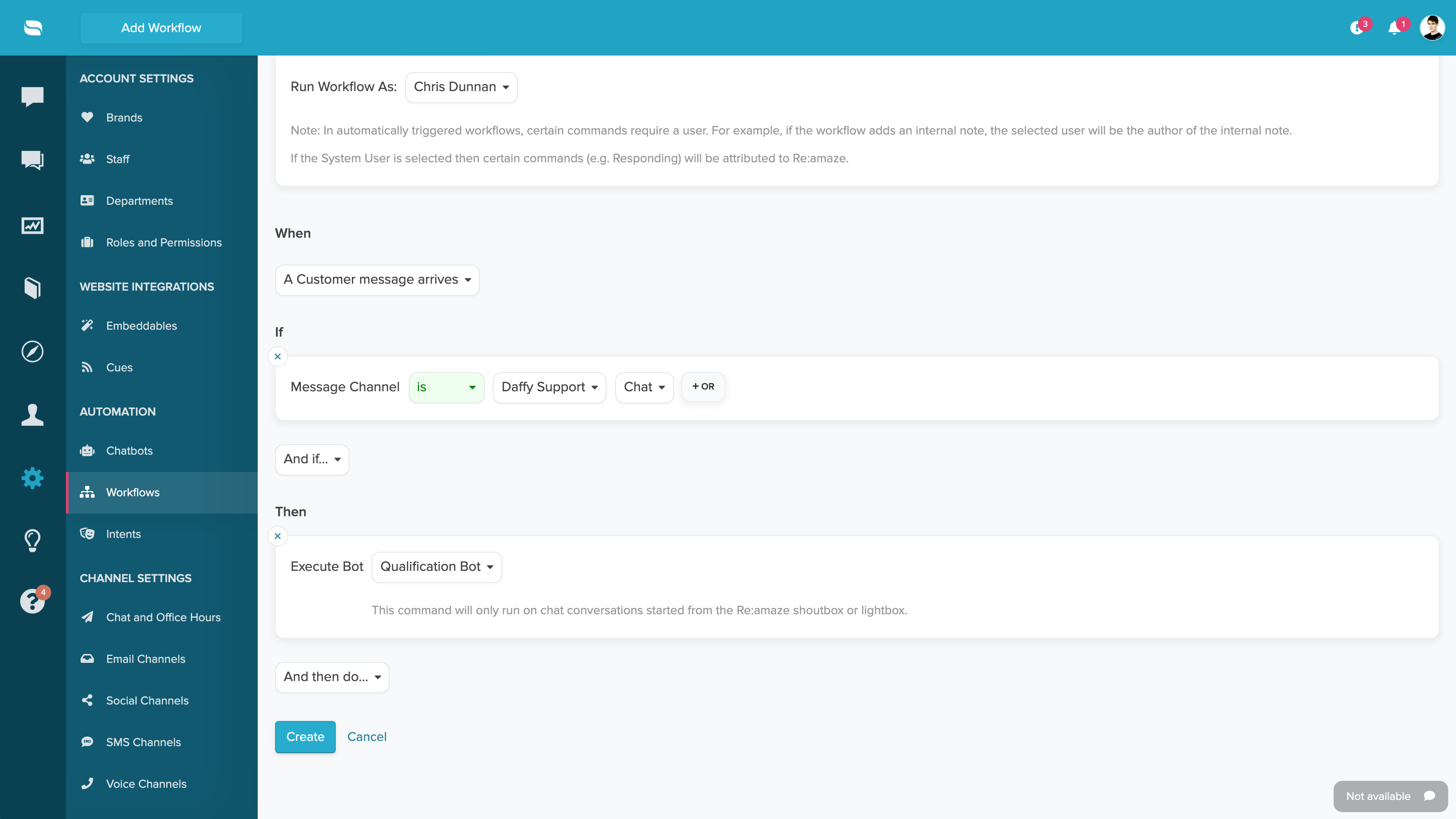
Workflow Bot With Conditions
The Workflow you’ve attached your Bot too can be a bit more complex to make sure the Bot does not trigger for everyone. In the example below, the Bot will only trigger when a new customer conversation arrives via Chat while you’re out of office and the customer has past Shopify orders as well as a customer tag in Shopify containing “VIP”.
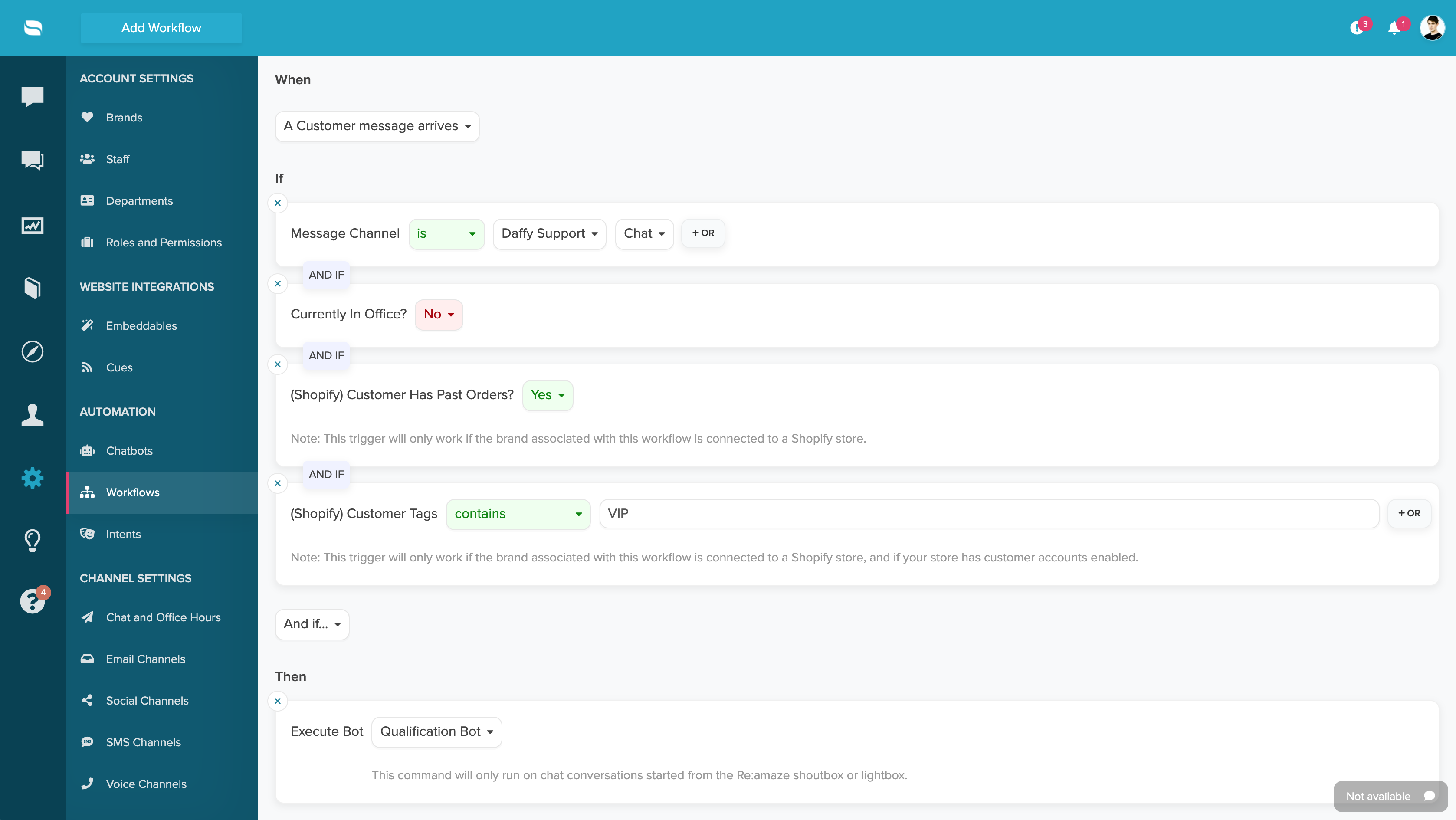
Workflow Bot With Intents
A great way to leverage the power of Workflow Bots is to combine it with Re:amaze Intents. Being able to automatically route customers to a specific chatbot based on a specific intent or sentiment is incredibly powerful.
In this example below, the Bot will only trigger when the customer conversation comes in via Chat during office hours where the “Post Purchase” Intent is matched with a confidence level greater than 90%, and the customer is from the United States via any state.
In your case, you may have an Intent for “Return Request” or “Product Replacement” or “Place a Purchase” and have a Bot for each.
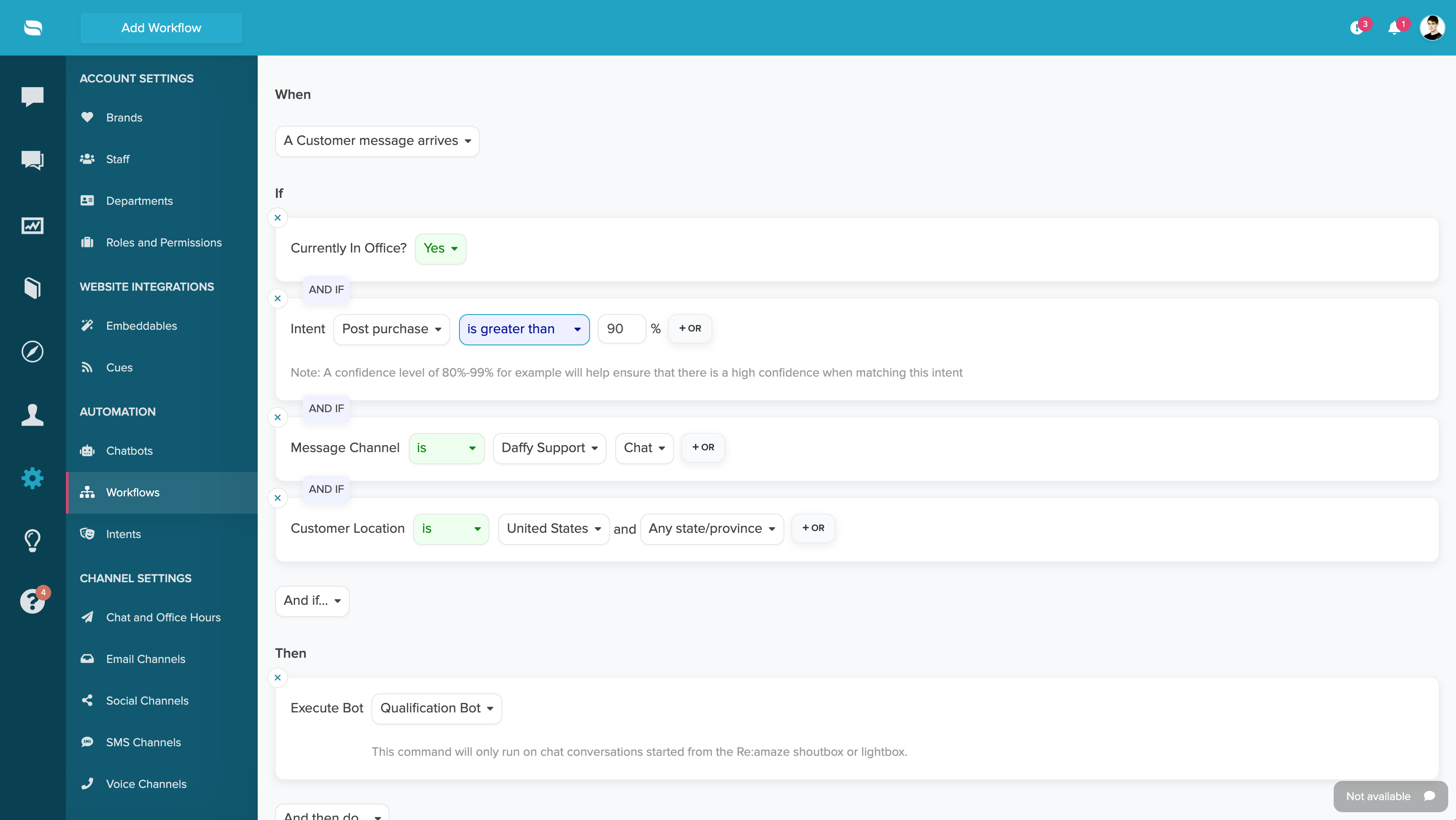
Workflow Bots With Custom Fields
Another great tee-off point for your Workflow Bots is with Custom Fields. Custom Fields are something you can add to your Re:amaze Chat experience. These Custom Fields can be dropdown menus, checkboxes, or other types of data collectors. When a customer chats with you after selecting a custom field option, you can choose to launch a Bot.
In this example below, the Qualification Bot will trigger when the customer conversation comes in via Chat on Saturdays and Sundays and where the customer’s Custom Field selection was “Determine Eligibility”. In your case, this Custom Field could be a product category or a department or anything you prefer.
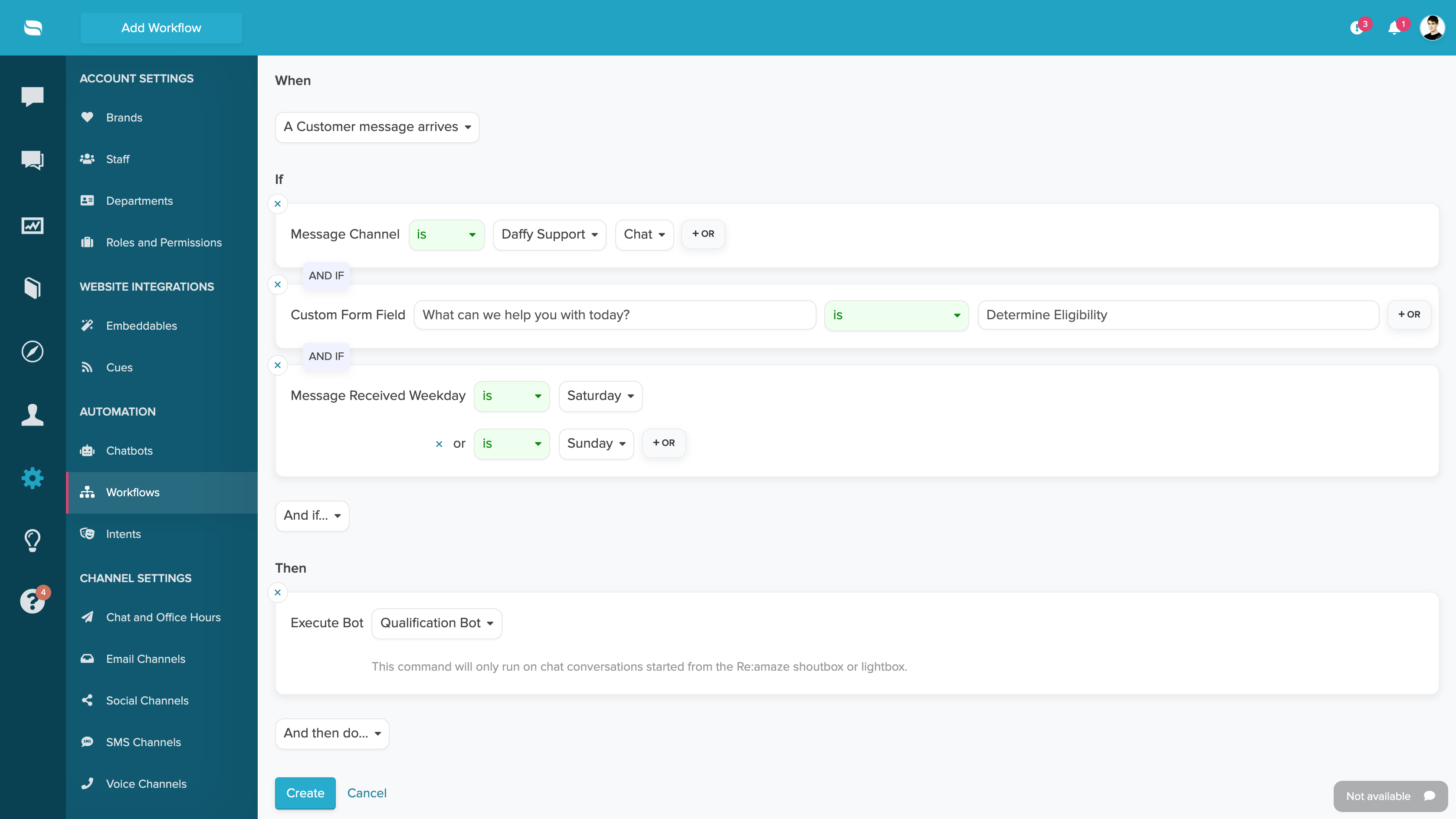
Workflow Bots With Reminders and Follow Ups
Another great application for Workflow Bots is automated follow-ups. When you put a conversation on-hold by setting a reminder Re:amaze will re-open that conversation when the due date is reached. This can be used as the “When” condition shown below.
In the example below, we’re asking the “Follow Up Bot” to be triggered when an on-hold conversation is due in the Chat channel, when the conversation has a tag called “Follow-Up Needed” and when the user is identified.
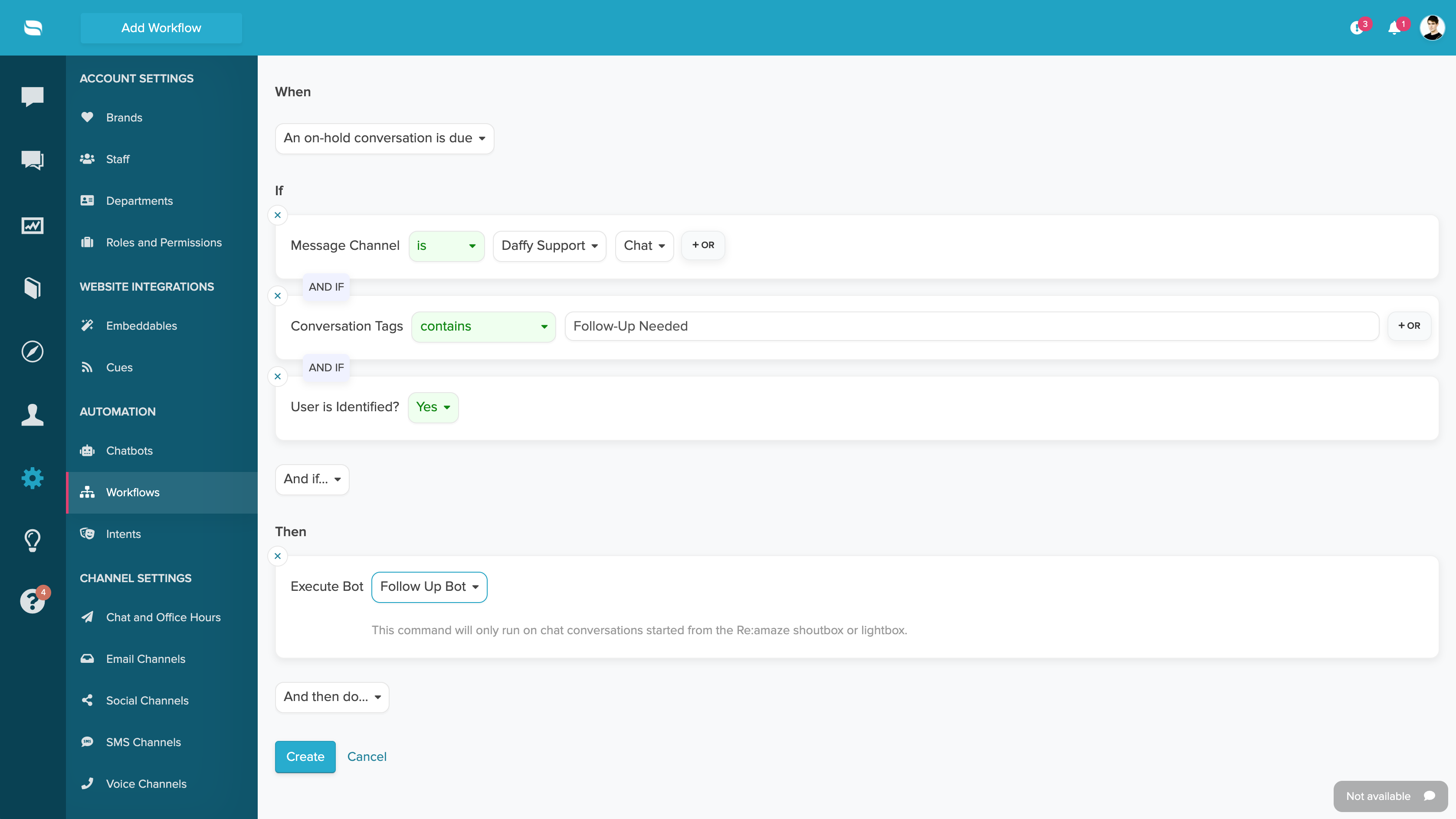
Manually Executing a Workflow Bot
Not all Workflow Bots need to be executed in an automated fashion. That means you don’t need to have conditions. Manually sending customers to a Bot can be beneficial when the situation is right.
For example, a customer sends you a chat message asking about what type of tent they should buy for camping in the Sierras. Coincidentally, you have a Bot that’s designed to ask them a series of questions about which tent is best. You can manually execute a Bot and send customers over to that flow!
